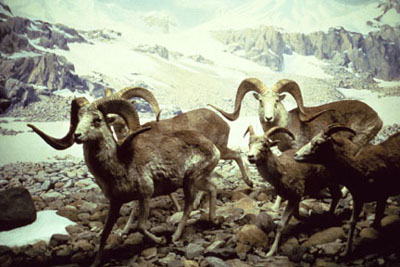

 The Accurate Reloading Forums
The Accurate Reloading Forums  THE ACCURATE RELOADING.COM FORUMS
THE ACCURATE RELOADING.COM FORUMS  Hunting
Hunting  Asian Hunting Forum
Asian Hunting Forum  The day of the urial
The day of the urialGo  | New  | Find  | Notify  | Tools  | Reply  |  |
| one of us |
https://www.thehindu.com/sci-t.../article34222767.ece The day of the urial Janaki Lenin APRIL 03, 2021 16:46 IST UPDATED: APRIL 02, 2021 14:50 IST Despite the severe stress on the species and its declining numbers, the urial continues to hang on For Munib Khanyari, the species which symbolises his mountain home isn’t the snow leopard, Tibetan wolf, or any of the iconic animals of Ladakh. Although the arid plateau is home to seven other species of ungulates, a little known wild sheep called the urial has wormed its way into the researcher’s heart. Despite growing up in Kashmir, Khanyari didn’t know of the urial until after he had set out to become a researcher. While conducting a survey of blue sheep, he came upon a skull that looked different. A shepherd identified it as shapu, a local name for the urial. It wasn’t a surprise that herders knew the species. Through the course of their workday, they kept tabs on the urial herds in their meadows. An intrigued Khanyari spent eight days looking for the species without success, and on the ninth day, he was rewarded by the sight of 200 urial. He described the beauty of the animal’s rich russet coat glinting in the light. The distant purple mountains offered a breathtaking backdrop. “Other mountain ungulates are a drab greyish white, the better to blend with their surroundings,” he says. “But the urial’s magnificence blew my mind. From a distance, when you see them running, they flow like the river with an ebb and flow.” The veteran biologist George Schaller had termed all the wild goats, sheep, and antelopes of the high elevations as ‘Mountain Monarchs’, but to Khanyari, the urial, in particular, epitomised the term. Sleeping on the horn The heads of rams resemble a bandy-legged letter ‘m’ with their thick horns describing a flamboyant arc. When Khanyari spotted a group resting on a slope, a ram rested its head at such an awkward angle that he thought the animal was dead. Only when it shook its head did he realise it had been sleeping on its horn. Later, he examined the bedding site and saw the clear impression of the appendage’s grooves embedded into the snow. Despite the impressive size of their horns, urial rams rarely fight. Instead, they study their rival’s posture, sizing them up, and usually, the one with an inferiority complex gives way. “The horns are a proxy for strength,” says Khanyari. “Indirect communication may not be as glamorous as fighting, but it saves the rams from wasting their energy.” When two evenly matched challengers meet, however, their silent argument escalates to head-on battering which sounds like a pistol shot. Eventually, brawn prevails in the brawl. The urial also communicate orally. When every member of the herd has its head down chomping greenery, one stands on a ridgeline keeping watch. If she spots danger, she blasts a snort-like whistle to alert the rest. Their heads pop up and they whistle nervously in response. “It’s funny to watch them,” says Khanyari. “Some don’t have a clue what’s going on and don’t realise the gravity of the situation. They go right back to grazing if she stops calling.” If she flees, the whole herd follows her like a wave. Many dangers The species’ preference for undulating meadows makes them vulnerable not only to snow leopards and packs of wolves and stray dogs but also humans. While hunting still remains a threat, people pose another, more insidious form of danger. The terrain favoured by the urial is ideal for growing crops, rearing sheep and goats, and building military and tourism infrastructure. All of these activities cut off urial populations from each other, leaving herds as small as 15 isolated from others. “Even if a valley has only a small flock, it is worth conserving,” Khanyari says. “Instead of seeing the situation as a glass half-empty, we could see it as half-full.” Despite the severe stress on the species and its declining numbers, the fact that the urial continues to hang on has come to symbolise something else for Khanyari: resilience. Kathi kathi@wildtravel.net 708-425-3552 "The world is a book, and those who do not travel read only one page." | ||
|
| Powered by Social Strata |
| Please Wait. Your request is being processed... |
|

Visit our on-line store for AR Memorabilia

